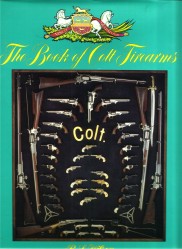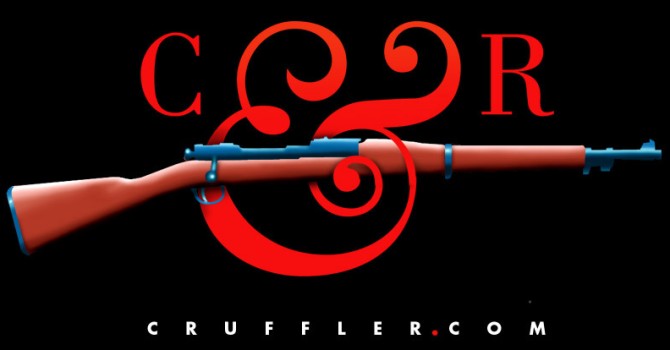
|
|
|
|
 |
HISTORIC
FIREARM OF THE MONTH,
January
2002:
|
|
|
BRITISH
MOBILIZATION, 1914
By the late
autumn of 1914, it had become evident to all but the most callow of observers
that Britain's involvement in the grand continental slaughter that became
the First World War would be neither brief nor uncostly. Equally
evident was the fact that Britain's professional army was simply
too small for the rigors ahead, and would require substantial augmentation.
(Indeed, by the end of the war, the total number of British killed
in action (KIA) would far exceed the total number of troops initially sent
to France in August 1914.) While the manpower to flesh out the British
forces could, and would be found, finding the weapons and ordnance with
which to equip the swelling ranks was another matter entirely. In
many cases both domestic and imperial facilities were simply unable to
provide the demanded production volume. Consequently, in many cases,
the British looked to not only to other sources for war materiel (most
notably the United States) but to substitute standard equipment as well.
One example of this wartime policy can be seen in the adoption of the Remington/Eddystone
manufactured Pattern 1914 .303 rifle. Another is the case of the
.455 caliber service revolvers.
| At the beginning of the war, the .455 Webley Mk. V was the standard British service pistol, and was supplanted in 1915 by a product improved variant known as the Webley Mk. VI. The top-break Webleys were well designed, reliable, and accurate arms whose only fault was that they could not be made rapidly enough to fill the demand created by a burgeoning British military. To meet this demand, the British turned to the two foremost manufacturers of revolvers in the world, Colt and Smith&Wesson. Both manufacturers immediately responded with variants of their large frame revolvers chambered for the British service .455 cartridge; Smith&Wesson with a version of the .44 caliber frame Hand Ejector and Colt |
|
COLT NEW SERVICE
| Caliber: | .455 Eley | Overall Length: | 10.83" |
| Weight, unloaded: | 41 ounces | Barrel: | 5.5" |
(photo courtesy of Keith Whaley, Whaley's Gunsmithing) |
A solid frame, double action design with a swing out cylinder, Colt's New Service model revolver was the company's large frame, heavy caliber offering from 1898 to 1944. Proving to be extremely popular with military and law enforcement clients, the six shot revolver was offered in a bewildering variety of chamberings, including .38 Short Colt, .38 Long Colt, .38 Special, .357 Magnum, .38-40, .38-44, .44-40, .44 Smoothbore, .44 Special, .44 Russian, .45 ACP, .45 Auto Rim, .45 Smoothbore, .45 Long Colt, .450 Eley, .455 Eley and .476 Eley. All the New Service variations were numbered in a single series from 0 through approximately 357,000. |
In 1909, Colt improved the original New Service lockwork. The small leaf springs in the hammer strut and the cylinder locking bolt were replaced with small coil springs. A small pivoted fly was eliminated from the from the rebound lever. The net result of these changes was to strengthen the lockwork and reduce the chance of parts breakage. Perhaps the most important product improvement was the addition of the "Colt Positive Lock," a hammer blocking safety in the form of a steel bar that slid between the hammer and frame that prevented the firing pin from striking the the primer if the hammer were inadvertently dropped while being cocked, or if the gun were dropped on a loaded chamber. The only way this locking mechanism could be disengaged was by pulling the trigger all the way to the rear. The improved 1909 lockwork is still used in modern Colt revolvers such as the Python and Detective Special. New Service frames were altered to accept these improvements at approximately serial number 21,000. The patent date for the positive lock, July 4, 1905, was added to the barrel legend at this time. Additional improvements were made in the area of frame geometry starting in 1909 as well. The triggerguard was made wider and was contoured into the frame in a series of streamlined curves. The bottom of the crane hinge was covered, providing protection against dents. The grip frame was strengthened by adding a crosspiece between the gripstraps so as to better resist bending when the gun was dropped.
The bulk of New Service production from the time of these improvements in 1909 until the middle of 1911 (23,000 to 53,000 serial number range) was earmarked for the Model 1909 US Army, Navy and Marine Corps revolvers. Between 1911 and 1914, the majority of New Service revolvers went to fulfill law enforcement contracts. For example, during this time, approximately 1,000 going to the Cuban "Guardia Rural," between 300 and 400 going to the Canadian Royal North West Mounted Police, and some 230 to the New York State Police. However, the order that was to put the New Service "on the map" was not long coming.
In 1914, England
found itself embroiled in the First World War and in desperate need of
revolvers. Large orders were placed with Colt, and 5.5" barreled
New Services cast in the role of .455 British military revolvers began
to surface in significant numbers around serial number 65,000 in 1914,
and continue until the middle of 1917 with serial number 139,000.
The guns were sent in regular large shipments, as these excerpts from Colt
shipping records indicate:
|
|
|
|
|
|
|
|
|
|
|
|
|
|
|
|
Colt was to manufacture upwards of 55,000 .455 New Service revolvers for British and Commonwealth armed forces. The majority of these were directly purchased by the British government and bear broad arrow government acceptance markings, as well as various inspection and proof marks. Not all New Service
(photo courtesy of Keith Whaley, Whaley's Gunsmithing) |
(photo courtesy of Keith Whaley, Whaley's Gunsmithing) |
(photo courtesy of Keith Whaley, Whaley's Gunsmithing) |
| The
earlier British contract guns, specifically those manufactured and delivered
in 1914 have the same highly polished, mirror-like blue of the regular
commercial production guns. As the contract progressed, the finish
went first to a satin blue, and later to a flat military finish.
While in English service, some were refinished by a method known as "stoving"
which involves painting the firearm in question with a black enamel and
then baking the finish on in an oven.
Factory markings on British military New Service revolvers included: |
(photo courtesy of Keith Whaley, Whaley's Gunsmithing) |
|
|
PAT'D AUG.5, 1884. JUNE 5, 1900. JULY 4, 1905 |
|
|
|
|
|
|
|
|
|
SMITH & WESSON HAND EJECTOR
| Caliber: | .455 Eley | Overall Length: | 11.753" |
| Weight, unloaded: | 38 ounces | Barrel: | 6.5" |
|
In
contrast to the Colt New Service, which had originally been offered in
.455 among other chamberings, the .455 Hand Ejector (First Model) was specifically
manufactured to meet the needs of a military organization. In fact,
the .455 Hand Ejector was the first N-frame revolver produced in large
quantities by Smith & Wesson.
In the summer of 1914, Smith & Wesson's new president, Walter Wesson (D.B. Wesson's oldest son) received an urgent communiqué from the British government requesting the manufacture of a .45 caliber revolver that would chamber the |
The factory began conversion of the .44 Special cylinders to .455 and made use of a set of .45 Colt barrels that had been produced for commercial sale. In accordance with England's urgent request for revolvers, the first guns were completed on September 24, 1914. Six days later, a lot of 250 had been built. The production rate continued to increase, and by January 19, 1915, Smith & Wesson had completed 5,461 revolvers for the British military.
The basic design of the .455 Hand Ejector was identical to the .44 Hand Ejector First Model, having a 6.5" barrel and blue finish. In the great hurry to produce the guns, the factory converted any unfinished frame on hand to the British caliber. As a result, the first group of 666 frames was completed and serial numbered within the .44 Hand Ejector series. The new production frames that had not been serial numbered were assigned a new serial number series beginning at 1. This resulted in a duplication of serial numbers for the first 666 frames.
The .455 Hand Ejector built upon Smith & Wesson's triple lock system is known as the .455 Hand Ejector First Model. The change from the first model type having the shrouded extractor rod, to the light weight barrel lacking the shroud (called the .455 Hand Ejector Second Model) began in January 1915 as the first of the new barrels and frames were being completed. By the time this change occurred, the serial number series for the .455 Hand Ejector had reached 5,000, and the changeover from the heavy, lugged barrel to the lighter barrel with no lug takes place between serial numbers 5,000 and 6,000 as the factory used up the older parts.
|
|
|
| All of the .455 Hand Ejectors made for the Commonwealth forces were shipped from the Smith & Wesson factory to the New York City office of the Remington Union Metallic Cartridge Company, which was acting as the British purchasing agent. The revolvers were then distributed to England and Canada, where they were inspected, proofed and accordingly marked. In February 1916, Smith & Wesson manufactured an order of 724 of the military style Hand Ejectors chambered for the .45 Colt cartridge. In April 1916, as the production of the .455 Hand Ejector Second Model was drawing to a close, enough |
|
CONCLUSION
It is a a
common historical misconception that the American contribution to the Allied
war effort during the Great War were limited to large quantities of fresh
but poorly equipped troops. It is true that the many Americans found
themselves under French or British command, and that many American units
found themselves supplied with automatic weapons, artillery, and armor
that derived from British or French sources. Equally true however
is the fact that much of the Allied war effort was paid for with American
dollars, that Allied supplies were moved with American trucks, and that
many of the aircraft flown by the Allied air forces were powered by engines
made in the United States. More to the point, American factories
supplied tremendous quantities of small arms to the Allied armies.
Some were made to foreign patterns, such as the Berthier rifles made for
the French by Remington-UMC, the Mosin-Nagant rifles made for the Russians
by Remington and New England Westinghouse, and the Pattern 1914 rifles
made for the British by Winchester and Remington (at both the Ilion and
Eddystone plants). Some, like the Colt New Service and the Smith
& Wesson .455 Hand Ejector were indigenous American designs.
These arms served the British and Commonwealth armies well, and were highly
regarded by the soldiers to whom they were issued. Indeed, in testament
to the American guns' durability, reliability and accuracy under the worst
conditions imaginable, a large number of British regimental museums today
show the American guns, and not the British Webley, as an integral part
of a First World Soldier's kit. The martial .455 Colts and Smith
& Wesson revolvers are highly collectible, as both examples of the
epitome of the art of the revolver, and important historical artifacts
in their own right.
BIBLIOGRAPHY
Hogg, Ian and John Weeks, Pistols of the World, 3rd Edition, (DBI Books, Northbrook, Illinois: 1992)
Jinks, Roy G., History of Smith & Wesson, (Beinfeld Publishing, North Hollywood, California: 1991)
Murphy, Bob, Colt New Service Revolvers, (World Wide Gun Report, Inc., Aledo, Illinois: 1985)
Wilson, R.L.,
The
Book of Colt Firearms, (Blue Book Publications, Inc., Minneapolis,
Minnesota: 1993)
Pistols
of the World, 3rd Edition is an out of print book, but is readily available
from rare and out of print book search engines such as ABEbooks.com.
Please click on the image to order.
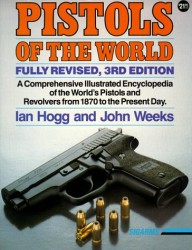
The History
of Smith & Wesson is available from the John C. Denner Company.
Click on the image to order.
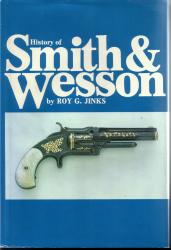
Colt New
Service Revolvers is available from IDSA Books. Please click
on the image to order.
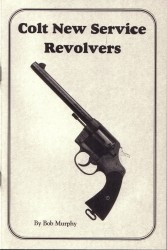
The Book
of Colt Firearms is available from IDSA Books. Please click on
the image to order.
